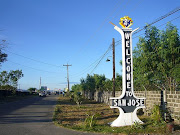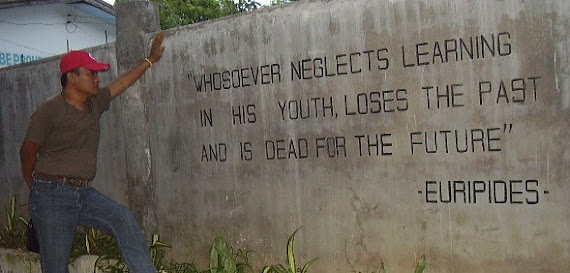Like the two disciples on the road to Emmaus, we, citizens of this province, are in deep frustration. We are frustrated with the socio-political and economic situation in our midst. We are frustrated how the two leading political titans divided instead of uniting us, and how they are pulling each other down. We are frustrated with the series of unsolved crimes happening in supposedly quiet and peaceful places like beaches and fields. We are frustrated with the sub-human conditions and anxiety of our Mangyan sisters and brothers because of the imminent threat of mining and oil exploration projects and exploitation of pseudo welfare organizations. We are frustrated with the misery of our fisher folks due to an alarming decline in their catch because of illegal ways of fishing often let go by some barangay and LGU officials. We are frustrated with landlessness of majority of our farm workers while suffering from the claws of usury and loan sharks amidst plunder of the public coffer by some of our public officials. Some are frustrated with the saddest consequence of political dynasty and patronage politics while many seem not to care about it. Upland communities are frustrated with the denigration of our forests due to legal and illegal logging that surely could attribute to climate change. Many of us are frustrated how cockfighting proceed is used to fund parish pastoral center. Majority of us are frustrated with how authority and power being wield for political and business gains of some local elites.
The list seems endless. So is our frustration.
We are people of frustration like the two disciples on the road to Emmaus (Luke 24: 13-25). So frustrated to long for someone to talk to and to lean on, someone who would listen. Someone must butt-in for these frustrations. Someone (or perhaps a human institution) that would break and share the “bread” as medium of the Lord’s prophetic and liberating message and fearlessly proclaim her social agenda. That someone or something could be our Particular Church, the Apostolic Vicariate of San Jose.
But what hindered her to regain her ground, like what Jesus did four times on His way to Calvary, after that sacrilegious fire and continue the mission of social communication apostolate to be the believers’ mouthpiece against the aforementioned immoral situation? Finding funds and focus, as a talented steward would know, are more sensible than finding faults and foes.
Unlike Jesus, they ignored the magnitude of those faithful walking down the road victimized by such unholy deeds of influential people and systems. Every task is worth accomplishing like how every pastoral cross is worth lifting. In sum, the question is this: What happened, pastorally speaking, to Church’s social teachings in the diocesan level at this particular juncture? Until when shall we resurrect from our ashes like the mythical Phoenix? When will we move on and remain an active Church aiming for social transformation? The gravity of these problems cannot afford us to enjoy our regular siesta.
Unlike before that we led the PAKRIS or Pamayanang Kristiyano, together with the pro-environment LGUs, cause-oriented organizations and Mangyan ethnic groups in staging series of successful mass actions against the Mindoro Nickel Project (MNP) and the Service Contract 53. Not to exclude our faith-based advocacy campaigns against gambling and the power crisis in the province and the other collective pastoral endeavors in the past. Including charity programs like educational assistance to poor but deserving sons and daughters of our indigent catechists and lay ministers. Those relief and rehabilitation preparedness aimed at communities affected by man- made and natural calamities, militarization or typhoons. Those are services at the diocesan front in the past that we rendered and worth mentioning here with all modesty and humility.
Our present Church leaders just passed us by while we are on our road to Emmaus in those particular socio-political instances. Jesus taught us that every person is worth stopping for but those people seem unmoved by our present predicament. As a result, unlike the two disciples on road to Emmaus, the people who live in far-flung, poor communities, the indigenous peoples in the mountains, the relatives and victims of unsolved recent crimes and all those I have mention above, failed to see and recognize Jesus in them!
Priests and lay people alike do not “break bread” only by regularly appearing on television celebrating healing masses. Neither by giving bowls of porridge to children who would come to hear mass or by taking care of the temporal goods of the Church and by wining and dining with the wealthy project donors, but also by breaking and sharing of the burdens and crosses of the victims of structural and systematic social sins and ills. It concretized too by joining the Pamayanang Kristiyano (PAKRIS) in their misery, hopes and struggles as citizens and believers no matter how risky it may be. It is likewise through keeping her social action mandates she can respond to the long agony of our people in this “forgotten half of the island.” This mission animates alongside with equally important sacramental, devotional and liturgical duties or healing ministry. This is imperative and not mere optional role of the Church no matter how controversial it may appear.
Pope Benedict XVI in his recent trip to Brazil said, “The Church is the advocate of justice and of the poor, precisely because she does not identify with politicians neither with partisan interests.” He added, “Only by remaining independent can she teach the great criteria and inalienable values, guide consciences and offer a life choice that goes beyond political sphere.” Then and now, this concern is not fully addressed among the ranks of the clergy and the lay people in our local Church.
In his letter to the Philippine Bishops in June 28, 1986 called “Ministry of Teaching and Guidance at the Service of Truth and Justice”, Blessed John Paul II rightly said, “This service to man will demand an intense evangelical effort, which is the proclamation of God’s salvation, in every context where people live and work. It will thus be faithful to an integral proclamation of the Gospel that must spread its light upon earthly realities, in such a way that may be helped free himself from everything that oppresses him and alienates him, so that he may be enabled to travel the path to his full self-realization, both earthly and transcendental.” We have no other option but keep our social action arm, charity programs and radio ministry incarnated now.
But it cannot be achieved without dialogue among us faithful. We have to be open to communication and communion. In his book “The Making of a Local Church”, Bishop Francisco F. Claver, SJ wrote, “In a church that is to be communion, mutual listening is a sine qua non for everyone: laity listening to the hierarchy, hierarchy listening to the laity, and all listening to the Spirit. Again, the need to a discerning Church- and a church that is in dialogue at all times, both externally (with the world at large) and with itself (with its members both clerical and lay). But dialogue is communication. So for it to be truly dialogic Church, it must be par excellence a church of communication.” We need not a fixed or closed mind. In such a situation there will be no dialogue but only an attempt to assert or impose the position of one on the other. Without brotherly dialogue, we cease to be a church.
To put them more accurately, men of faith cannot afford to lip service our social teachings on charity, advocacy and Traditions of the Church. We need to cast out our nets into these social “deeps”. Indeed, the Church must be sensitive to the “signs of times” (i.e., the socio-political and economic context of our province) as she manifests herself in the inspiration and frustration of the people of God.
It is only through this breaking and sharing away our self beyond our comfort zones and convictions that the poor and downtrodden recognize Jesus’ image in us.
Like how the Risen One recognized by his disciples on a village along the road to Emmaus…
------
Photo : SJCS File, Salafay
Subscribe to:
Post Comments (Atom)







No comments:
Post a Comment